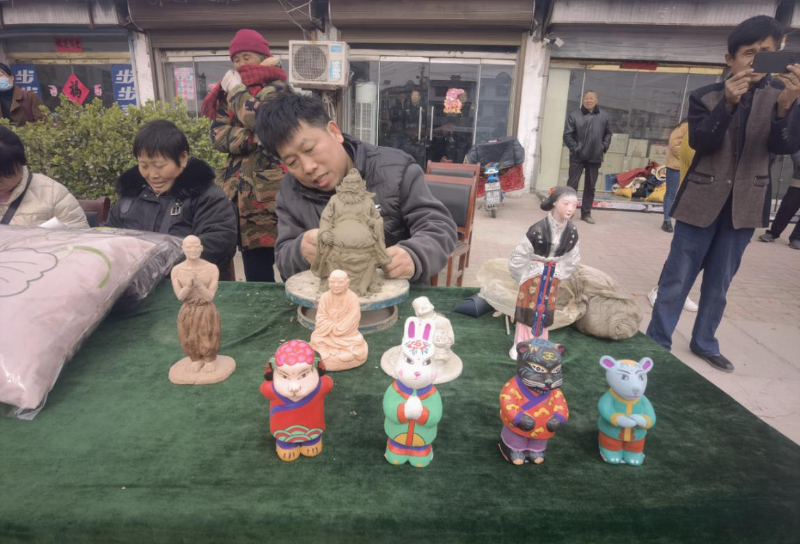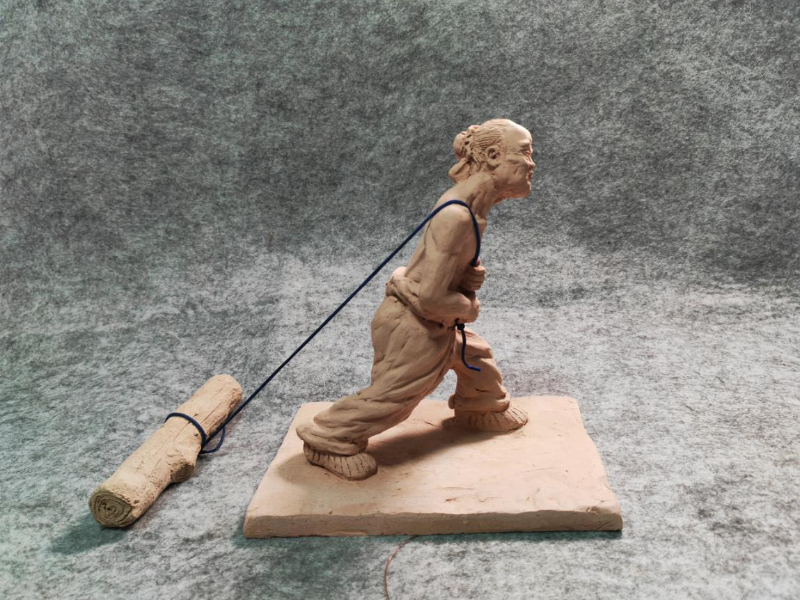Inspirational clay sculptures highlight Yellow River culture

Master Liu Changwei proudly shows his clay sculptures. [Photo by Sun Tongwen for chinadaily.com.cn]
Liu Changwei, a fifth-generation inheritor of traditional Liujia clay sculptures in Juancheng county – administered by Heze city in East China's Shandong province – can give life to mud with his skillful hands.
The Liu family has been living on the banks of the Yellow River for generations and Liu Changwei has been inseparable from the Yellow River's mud since he was a child.
From an early age, he has been following in the footsteps of his grandfather and father to learn the traditional clay sculpture production skills.
His creative inspiration mostly comes from the scenes of people's lives along the Yellow River that linger deep in his memory. In his hands, a piece of Yellow River mud reproduces the life of the people and highlights the strong characteristics of Yellow River culture.

An example of the vivid clay sculptures that Liu Changwei creates. [Photo by Liu Changwei for chinadaily.com.cn]
As an inheritor of this prized item of cultural heritage, Liu Changwei says that he shoulders a great responsibility. As such, he has been actively developing traditional skills, collecting works by older artists and training newcomers to the artform.
Liujia clay sculptures are a municipal intangible cultural heritage in Heze city. They originated in the late Qing Dynasty (1644-1911). Due to the special geographical location on the banks of the Yellow River, exponents use the Yellow River's mud that is some 2 meters below the surface. (Edited by Fan Yuanyuan)








